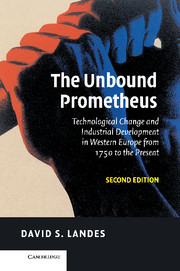 The Unbound Prometheus
The Unbound Prometheus 7 - Reconstruction and growth since 1945
Published online by Cambridge University Press: 05 June 2014
Summary
If it is difficult to write the economic history of the interwar years, it is even harder to write that of the period after World War II. The one is confused and often murky; the other is current, and one's interpretation of the course of development is subject to the vagaries of change. Fifteen years ago, in the early 1950's, a number of observers, myself included, were offering careful analyses of France's economic retardation ; and the fact was that France, after the stagnation of the thirties and the dislocation of the forties, did not seem to be pulling herself out of a morass of persistent inflation, technological conservatism, and social discontent. Ten years ago, the tune had changed as a result of rapid and sustained growth; a new wind was blowing in the land. A few years later, after the economy had shown intermittent signs of slowing, the assumption of a new era of ceaseless expansion gave way to a more cautious but still confident assessment. And today, with the slowdown of the mid-sixties behind us, the tone of the observer is once again hopeful, though the riots and strikes of 1968 have served to remind us of the primacy of politics and the fragility of man's plans and expectations.
This is the hazard of contemporary history: every opinion is a speculation on the future as well as a judgment of the past. Nevertheless, a full generation has elapsed since the start of the Second World War, a generation marked by substantial economic development that is the more important for its contrast with what preceded it.
- Type
- Chapter
- Information
- The Unbound PrometheusTechnological Change and Industrial Development in Western Europe from 1750 to the Present, pp. 486 - 537Publisher: Cambridge University PressPrint publication year: 2003
